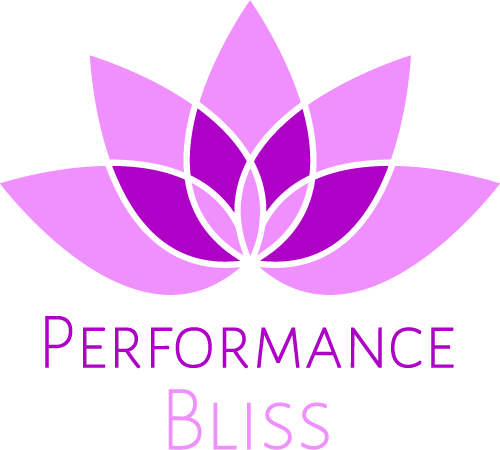The year-end review is a crucial opportunity for managers to evaluate employee performance, set future goals, and ensure alignment with the company’s overall vision. A well-conducted year-end review not only provides constructive feedback but also ensures that both employee and company goals are moving in the same direction.
In this article, we’ll explore how to align employee objectives with company goals during the year-end review process. By doing so, managers can create a roadmap for growth that benefits both the individual and the organization.
For a streamlined review process, PerformanceBliss offers tools that make tracking progress and aligning goals simple and effective.
Why Alignment Matters in the Year-End Review
Alignment between employee objectives and company goals is essential for long-term success. Employees who understand how their work fits into the larger picture are more motivated, engaged, and productive. The year-end review is the perfect time to discuss this alignment and ensure everyone is on the same page.
Here’s why aligning goals during the year-end review is important:
- Clarity: Employees need to understand how their work contributes to the company’s success.
- Engagement: When employees see the bigger picture, they are more likely to be motivated and engaged.
- Efficiency: Aligning goals ensures that individual efforts support broader company objectives, leading to more focused and efficient work.
When managers focus on aligning goals during the year-end review, they help employees see their role within the company’s vision.
How to Write a Year-End Review That Encourages Alignment
When learning how to write a year-end review, one of the key goals is to ensure that employee objectives are aligned with the company’s vision. This requires thoughtful preparation and a structured approach to the review process.
Here’s how to write a year-end review that encourages alignment:
- Start with Company Goals: Begin the review by discussing the company’s overall vision and objectives. This sets the context for the conversation.
- Link Employee Contributions: Show how the employee’s achievements have contributed to those company goals. Be specific about how their work made an impact.
- Discuss Future Priorities: Talk about the company’s future objectives and how the employee’s role will evolve to support them.
By framing the review around the company’s vision, you help employees understand their importance within the organization.
With PerformanceBliss, managers can track both company goals and individual progress, ensuring that year-end reviews are focused on alignment and growth.
Setting SMART Goals to Align with Company Objectives
Setting clear, actionable goals is an essential part of the year-end review process. When these goals are aligned with company objectives, it creates a win-win situation for both employees and the organization. The SMART framework (Specific, Measurable, Achievable, Relevant, Time-bound) is an effective way to set goals that align with the company’s vision.
Here’s how to set SMART goals that align with company objectives during the year-end review:
- Specific: Goals should be detailed and directly related to the employee’s role within the company. For example, “Increase sales by 10% by targeting new customer segments.”
- Measurable: Make sure progress can be tracked. For instance, “Complete three training sessions on new software by Q2.”
- Achievable: The goal should be challenging but realistic. Align it with the employee’s current skills and the company’s needs.
- Relevant: Ensure the goal contributes directly to the company’s objectives. Ask yourself, “How does this help the company succeed?”
- Time-bound: Set clear deadlines. A goal like “Complete the project by June” provides a concrete timeline.
When goals are SMART, they become easier to track and achieve, ensuring that both the employee and the company are working toward shared objectives.
PerformanceBliss helps managers set and monitor SMART goals, making sure that progress is measurable and aligned with company priorities.
How to Write a Year-End Review That Encourages Employee Engagement
Engagement is a critical factor in employee retention and performance. When employees see how their work aligns with the company’s mission, they feel more connected to their job. One of the key roles of the year-end review is to foster this engagement by linking individual contributions to broader company goals.
Here’s how to write a year-end review that encourages engagement:
- Recognize Achievements: Start by acknowledging the employee’s accomplishments over the year. Be specific about how their work supported the company’s objectives.
- Provide Constructive Feedback: Offer honest feedback, but frame it in a way that shows the employee how improvement will contribute to the company’s success.
- Discuss Career Development: Talk about the employee’s long-term career goals and how they can align with the company’s growth. Employees who see a future in the company are more engaged.
By recognizing contributions and linking them to company goals, employees will feel more invested in their work and motivated to succeed.
With PerformanceBliss, managers can easily track employee achievements and provide feedback that keeps employees engaged and aligned with the company’s vision.
Involving Employees in the Goal-Setting Process
For alignment to be truly effective, employees need to have a say in the goal-setting process. Collaborative goal-setting ensures that employees are invested in their objectives and see how their work contributes to the company’s success.
Here’s how to write a year-end review that involves employees in goal-setting:
Ask for Input: Encourage employees to reflect on their performance and suggest goals they would like to pursue.
Discuss Their Aspirations: Understand the employee’s personal career goals and how these can align with the company’s direction.
Collaboratively Set Goals: Work together to set goals that satisfy both the employee’s professional growth and the company’s needs.
By involving employees in the process, you create a sense of ownership and ensure that goals are meaningful to them.
PerformanceBliss allows managers and employees to collaborate on goal-setting, creating a more personalized and effective review process.
How to Write a Year-End Review That Addresses Challenges
Not every year will be perfect, and it’s important to address any challenges or setbacks during the year-end review. However, these challenges should be framed as opportunities for growth that align with the company’s objectives.
Here’s how to address challenges while maintaining alignment:
Acknowledge the Issue: Be honest about any performance issues or missed targets. Use data to support your feedback.
Frame It as a Growth Opportunity: Discuss how overcoming these challenges will help both the employee and the company succeed in the future.
Set Improvement Goals: Create specific goals focused on addressing these challenges. For example, “Improve project management skills by attending a workshop and completing two large projects next year.”
Addressing challenges in a constructive way helps employees understand that growth, not punishment, is the goal.
PerformanceBliss helps track both successes and challenges, ensuring that goals are adjusted accordingly during the year-end review.
Continuous Alignment Throughout the Year
While the year-end review is a great time to align goals, alignment should be an ongoing process. Continuous feedback and goal adjustment throughout the year ensure that employees stay aligned with company objectives even as priorities shift.
Here’s how to maintain alignment beyond the year-end review:
- Regular Check-ins: Schedule quarterly or monthly meetings to review progress on goals and adjust them as necessary.
- Provide Ongoing Feedback: Keep the lines of communication open so that employees know how they’re performing relative to company goals.
- Adjust Goals as Needed: If company priorities change, adjust employee goals to reflect these shifts. Ongoing alignment ensures that employees remain focused and that their efforts continue to support the company’s vision.
PerformanceBliss allows managers to track goal progress throughout the year, making it easy to stay aligned and adjust goals when needed.
Conclusion: The Power of Alignment in Year-End Reviews
The year-end review is not just a time to reflect on past performance—it’s an opportunity to set a clear path for the future. By aligning employee goals with company objectives, managers create a stronger, more engaged workforce that is invested in the company’s success.
For managers looking to simplify the review process and ensure better alignment, PerformanceBliss offers the tools you need. From tracking progress to setting SMART goals, PerformanceBliss makes sure your year-end reviews are focused, effective, and aligned with your company’s vision.
👇 Related Reads from Performance Bliss
If you found this helpful, you might also like:
- 🔗 Turning Performance Reviews into a Shared Growth Experience
- 🔗 Turning Feedback Into Action: A Step-by-Step Framework
- 🔗 Performance Reviews for Small Businesses: A Practical Roadmap
- 🔗 How to Make Performance Reviews Memorable and Motivating
- 🔗 How Friendly, Constructive Feedback Builds High-Performing Teams


